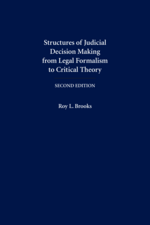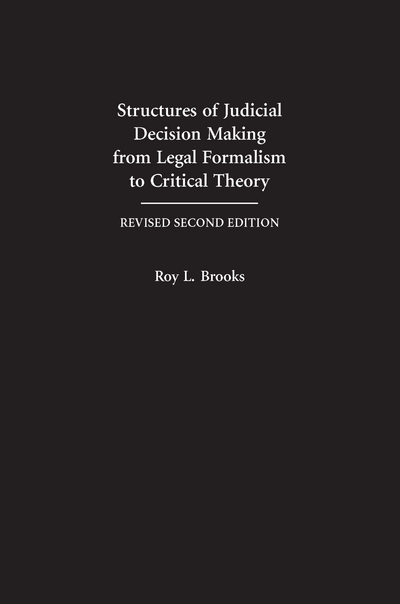This hardback edition has been replaced by a new paperback edition:
Structures of Judicial Decision Making from Legal Formalism to Critical Theory (Paperback), Second Edition
2005, 380 pp, paper, ISBN 978-1-61163-359-7
$50.00
Structures of Judicial Decision Making from Legal Formalism to Critical Theory
Second Edition
2005
Tags: Legal History
380 pp $50.00
ISBN 978-1-59460-123-1
To order a paperback version of this book, please click here.
This is a general book on jurisprudence designed for both the novice and more experienced student, which makes it suitable for first-year law students. It is the first book to distinguish and connect traditional theories of judicial decision-making (e.g., legal formalism, textualism, legal realism, and legal process) with "critical process" (which is critical theory transformed from a theory of legal criticism into a theory of judicial decision-making).
Brooks breaks new ground on several other fronts as well — he employs an innovative framework that divides judicial decision-making models into the "logical method" and the "policy method;" offers a more nuanced conceptualization of judicial policy-formulation in which judges are seen as not only making policy, but also (and more typically) as discovering and vindicating policy; redefines "policy-making" in a manner that is different from our traditional understanding of the term; and synthesizes critical process into three judicial models: symmetrical, asymmetrical, and hybrid.
The book is written in two parts. Part 1 (Traditional Process) discusses five major traditional judicial models, each reflective of either the logical method or the policy method. Part 1 ends with a synthesis of the traditional models (dividing them into three categories), which judges who have used the book find to be most useful. Part 2 (Critical Process) begins with a discussion of critical theory's central theme and operating elements and then transforms these features into a theory of outsider-oriented judicial decision making, something judges can actually use in deciding cases. Critical theory is thus transformed into "critical process."



